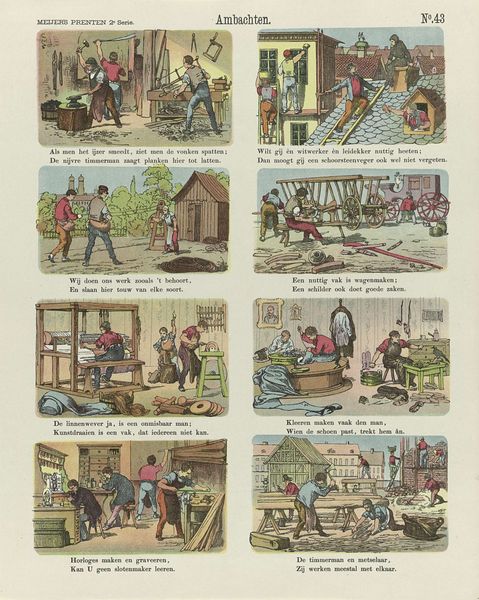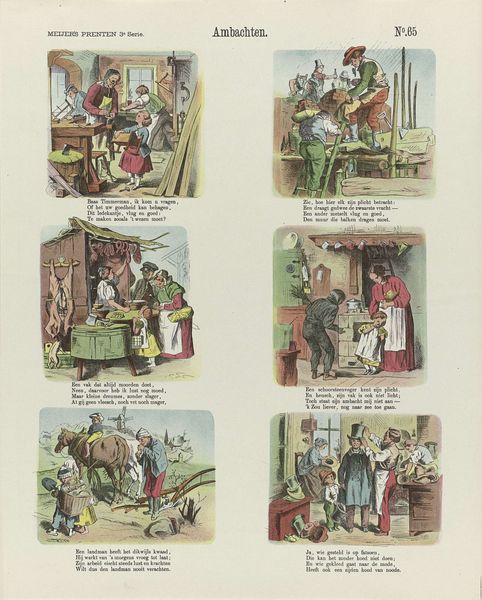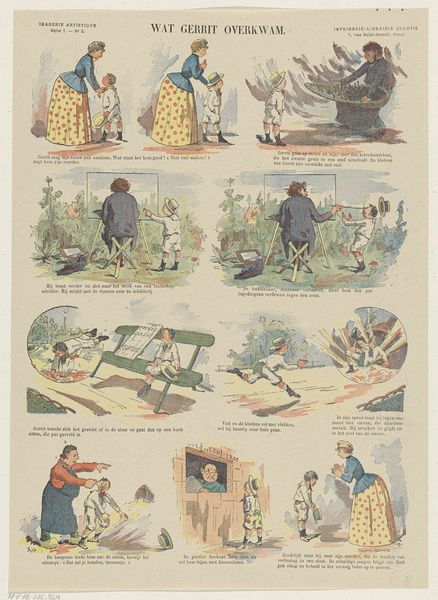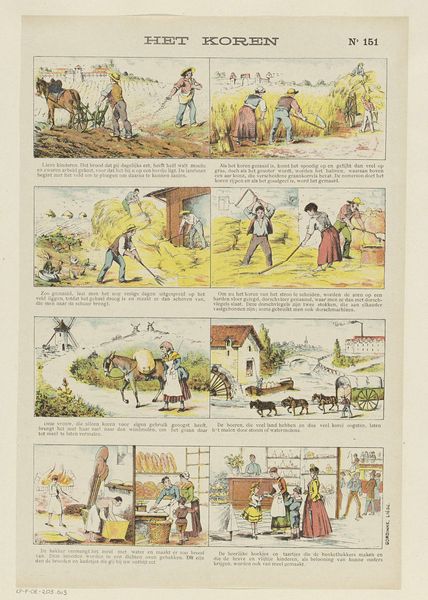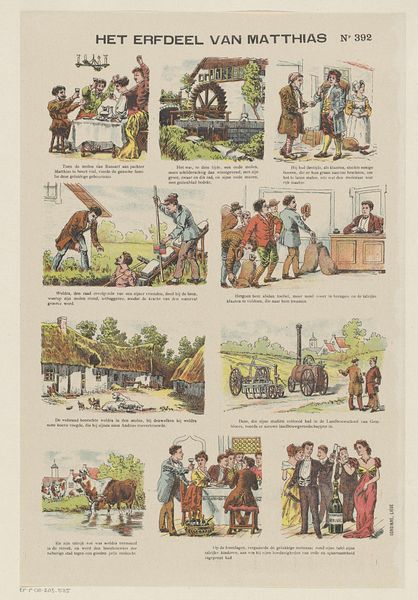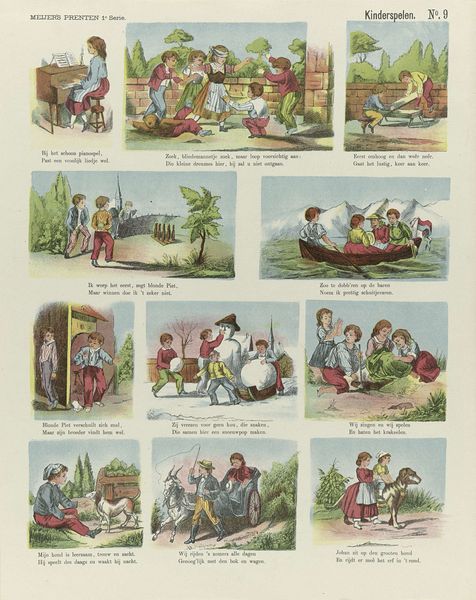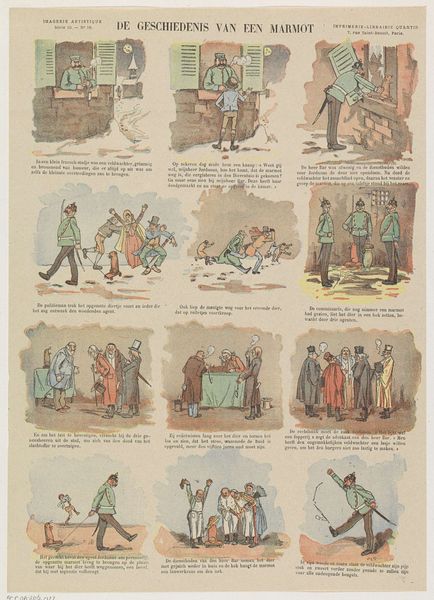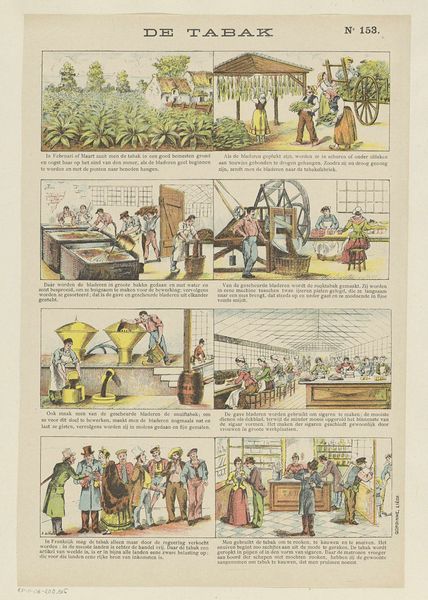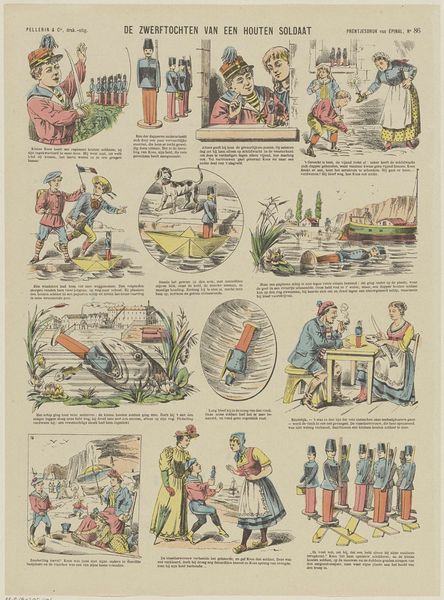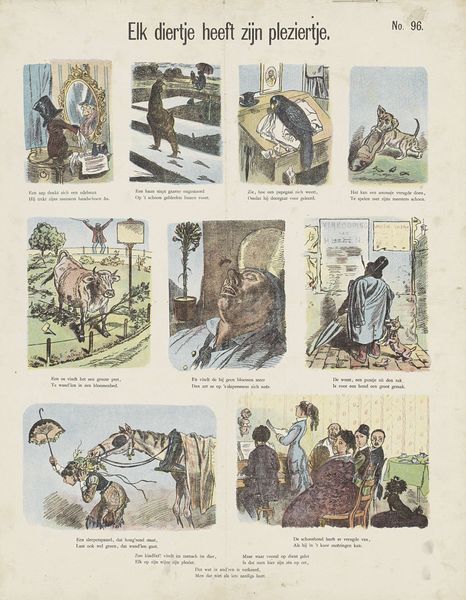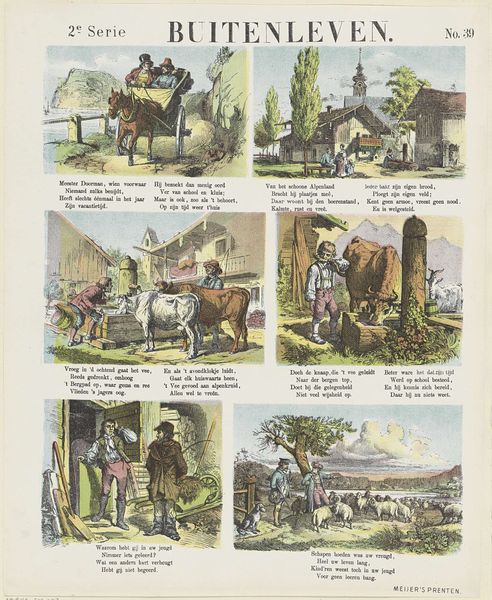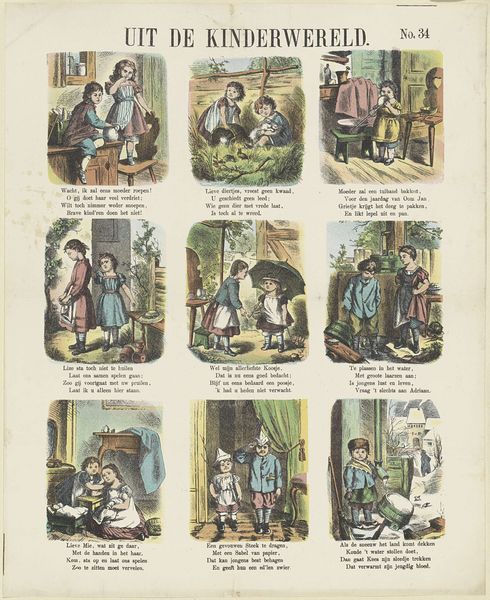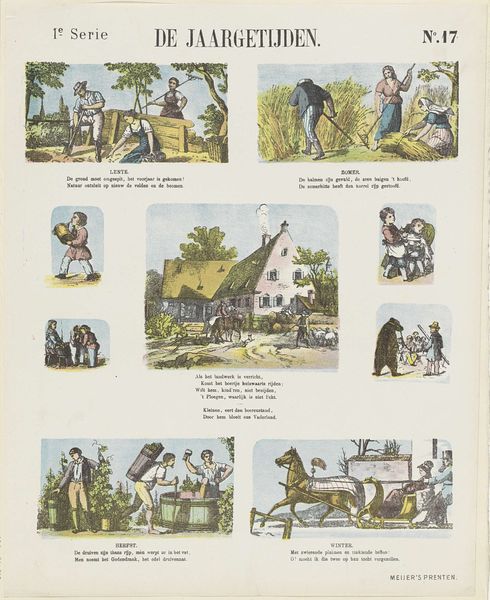
lithograph, print
#
comic strip sketch
#
narrative-art
#
comic strip
#
lithograph
# print
#
folk-art
#
genre-painting
Dimensions: height 420 mm, width 344 mm
Copyright: Rijks Museum: Open Domain
Curator: This lithograph from 1873, titled "Ambachten" by De Ruyter & Meijer, presents a series of vignettes. It's hard not to see the charm of its visual narrative. Editor: Indeed. The overall composition, a grid of distinct panels, immediately draws me in. The subtle coloring lends the print a quaint, almost nostalgic aura. Curator: As a print, consider the mechanics of production here. These weren’t unique artistic visions, but likely widely distributed images showcasing local industries to the people, demonstrating their daily means of labor and illustrating various aspects of craft and the social structure. Editor: I see what you mean, but from a purely visual perspective, each panel employs compositional devices like strong diagonals to lead the eye, while the earthy color palette ties the entire piece together. The human figure is represented somewhat simplistically, but effectively, to carry a strong sense of clarity within each micro-narrative. Curator: And within each of those panels is a specific craft at play: coopering, farriery, carpentry, metalworking… It underscores how knowledge and skill are transmitted from master to apprentice, and emphasizes how important that knowledge was for self-sustenance and economy at the time. It speaks to a whole range of professions and their embedded social meaning within the local population. Editor: What strikes me is the inherent flatness—the lithographic technique necessitates simplification, a reduction to essential forms. But isn't there a beauty in that directness? How would this flatness relate to the narrative? Is this merely illustration or something deeper, culturally? Curator: Well, perhaps the aesthetic simplicity is functional. These prints probably aimed to communicate clearly and efficiently to a broad audience—emphasizing accessibility and utility. That also suggests a level of standardization in how such professions were regarded by the larger local populace. Editor: That's a good point. Thinking about accessibility invites a more complex view of the imagery beyond my first impressions. The apparent artlessness cleverly facilitates accessibility to working communities across regions. Curator: Exactly! So, maybe, to reconsider: these images are less about high art ideals, but serve as an accessible archive about labor. Editor: Fair enough, on a closer look I concede there’s so much more to appreciate in these images. Thank you.
Comments
No comments
Be the first to comment and join the conversation on the ultimate creative platform.
